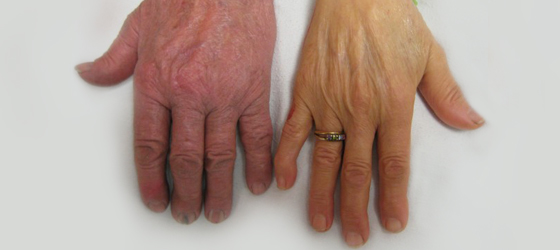Anemia

Anemia is a medical condition in which the red blood cell count or hemoglobin is less than normal. Red blood cells carry oxygen to all of the body’s tissues. Anemia is measured according to the amount of hemoglobin, which is the protein within red blood cells that carries oxygen from the lungs to the body’s tissues. For men, anemia is typically defined as hemoglobin level of less than 14 g/dL and in women as hemoglobin of less than 12.0 g/dL.
Causes
There are more than 400 types of anemia, which are divided into three groups: 
- Anemia caused by blood loss
- Anemia caused by decreased or faulty red blood cell production
- Anemia caused by destruction of red blood cells
- Certain forms of anemia are hereditary and infants may be affected from the time of birth.
- Women in the childbearing years are particularly susceptible to iron-deficiency anemia because of the blood loss from menstruation and the increased blood supply demands during pregnancy.
- Older adults also may have a greater risk of developing anemia because of poor diet and other medical conditions.
Symptoms
The symptoms of moderate to severe iron deficiency anemia include:
- General fatigue
- Weakness
- Pale skin

- Shortness of breath
- Dizziness
- Strange cravings to eat items that aren’t food, such as dirt, ice, or clay
- Tingling or crawling feeling in the legs
- Tongue swelling or soreness
- Cold hands and feet
- Fast or irregular heartbeat
- Brittle nails
- Headaches
Diagnosis
 A complete blood cell (CBC) test is usually taken to measure the amount of all components in the blood, including:
A complete blood cell (CBC) test is usually taken to measure the amount of all components in the blood, including:
- Red blood cells (RBCs)
- White blood cells (WBCs)
- Hemoglobin
- Hematocrit
- Platelets
Copyright©2015 Amrita CREATE All Rights Reserved

 അറിയുക
അറിയുക
 പ്രാക്റ്റീസ്
പ്രാക്റ്റീസ്
 Offline
Offline


 ഉപകരണങ്ങൾ
ഉപകരണങ്ങൾ


